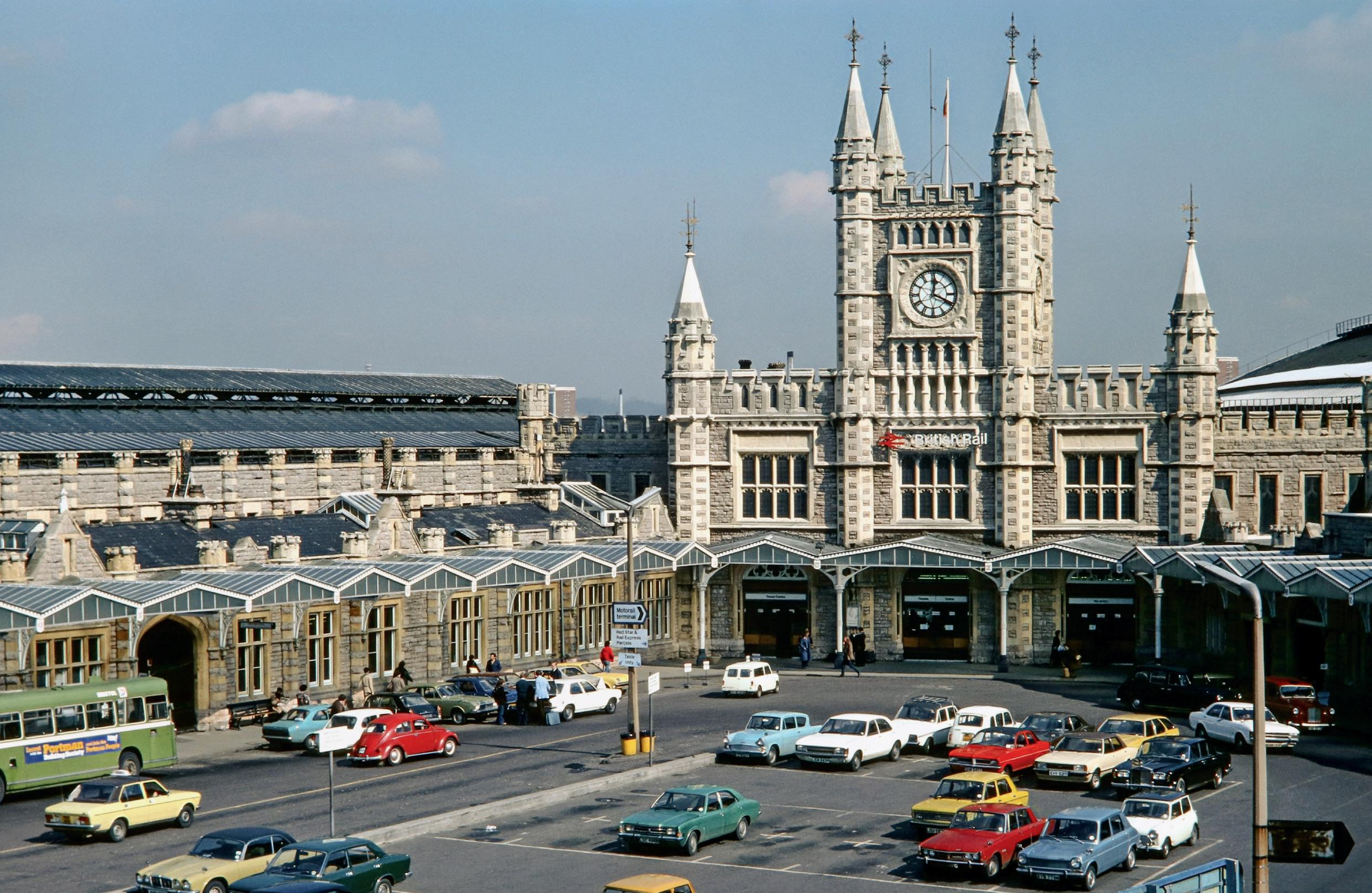
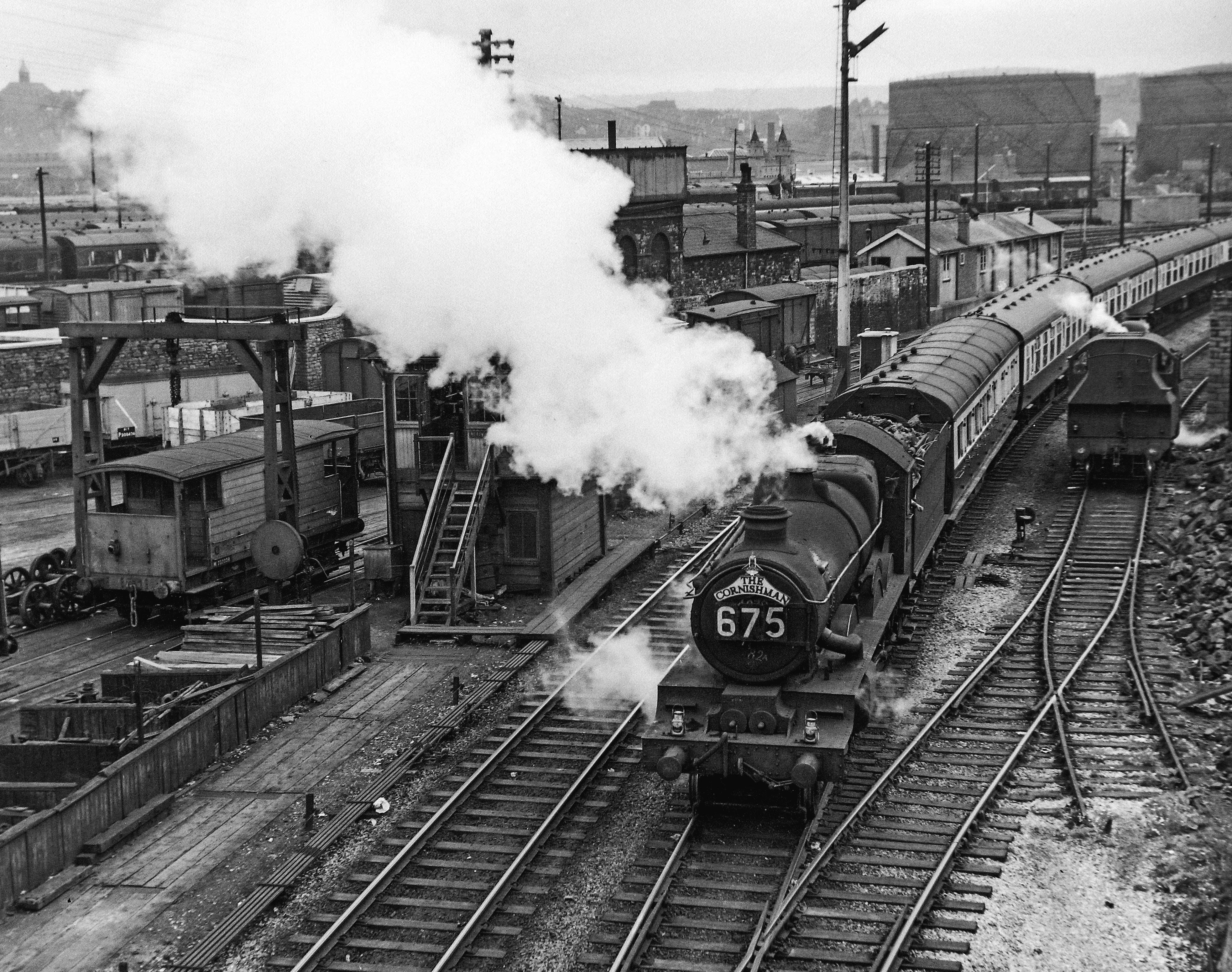
Left: An earlier manifestation of “The Cornishman” carrying reporting number 675 is headed by an unidentified Castle class locomotive and captured here negotiating the curve away from Temple Meads, heading up the Midland line with the up service from Penzance. An Ivatt tank is seen on the right. The gas holders situated in the appropriately named Gas Lane to the east of Temple Meads are prominent in the background. (George Heiron)
Right Top: Another of the named expresses was “The Merchant Venturer” introduced in 1951 in connection with the Festival of Britain and seen here at Bristol on 16 April 1955 headed by King Class No 6015 King Richard III. It is carrying the headboard and reporting number 142 and has just detached itself from the down service. The train from Paddington called only at Bath Spa and Temple Meads and after a locomotive change would terminate at Weston-super-Mare. (Stephen Summerson)
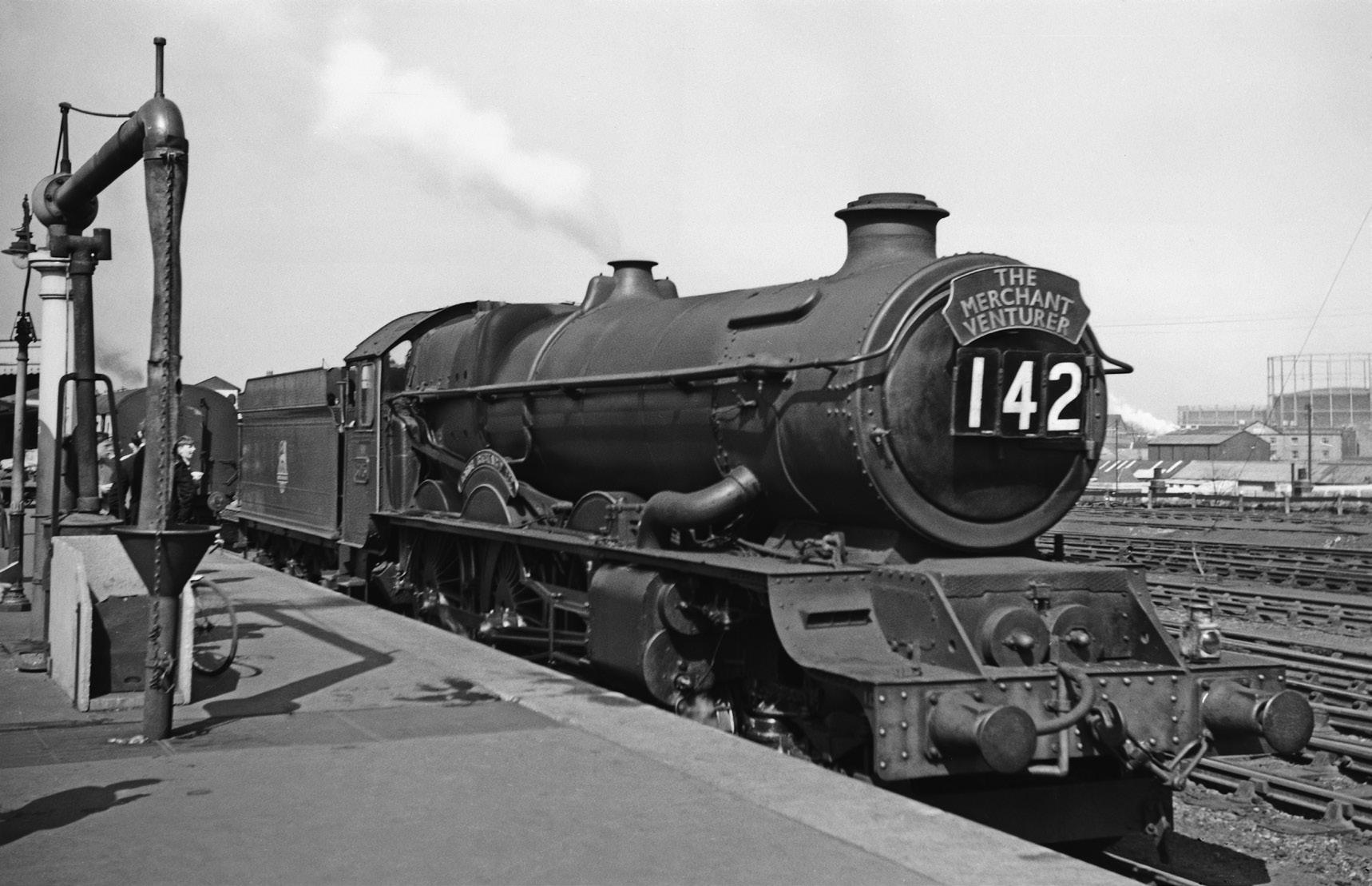
Right Bottom: A headboard of a rather different kind is that advertising the “Bath Festival” which in 1958 ran from 29 May until 7 June. Bath has held music, drama and arts festivals of different types and under various titles since 1930. The event held in 1955 was called the ‘Bath May Festival’ and although no event was held in 1956 or 1957 from 1958 until 1987 events were known as simply the ‘Bath Festival”. Here Castle class No 7024 Powis Castle has charge of the 6:10pm service from Bristol to Paddington on 30 May 1958. (Leslie Freeman)
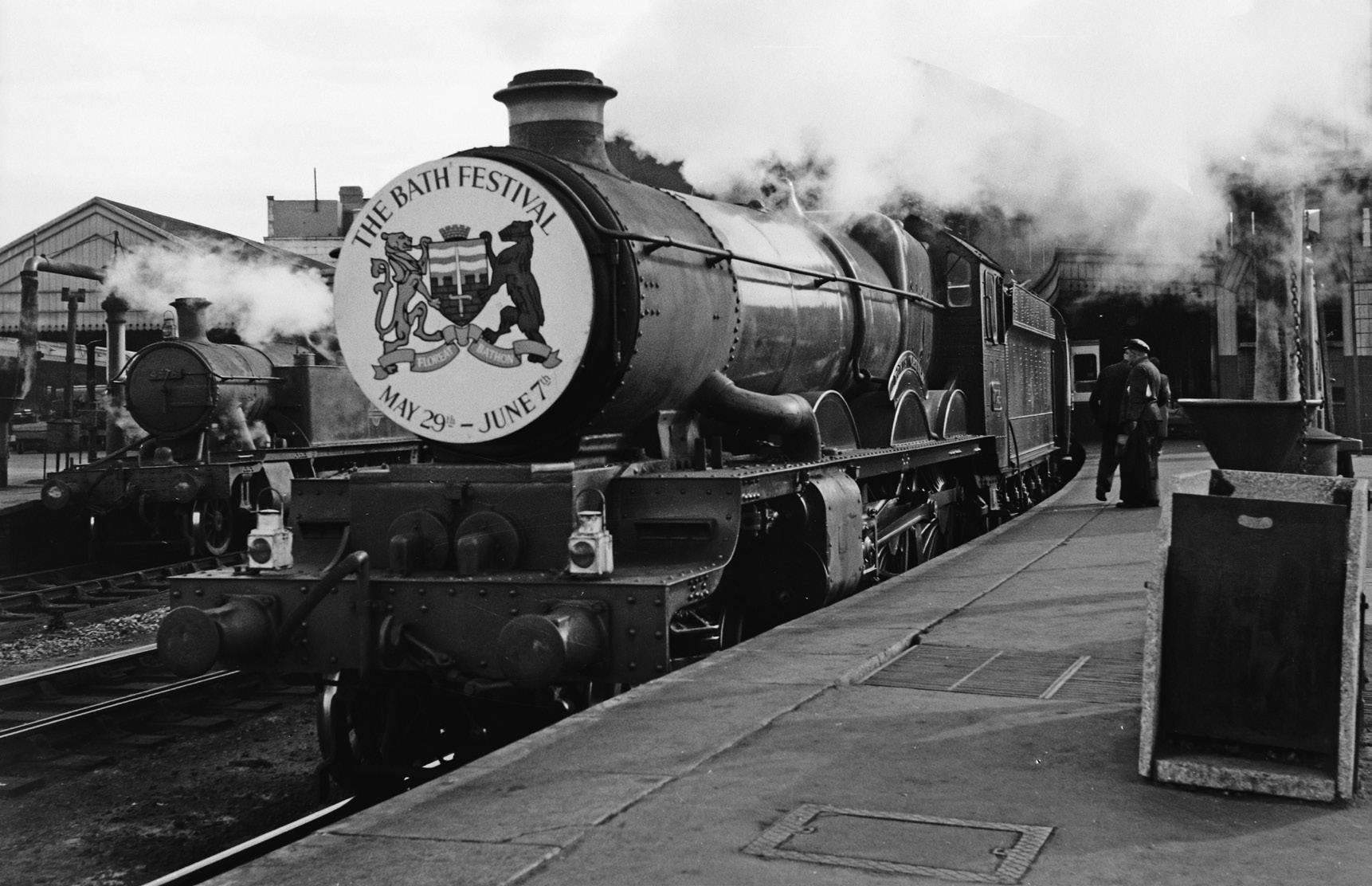
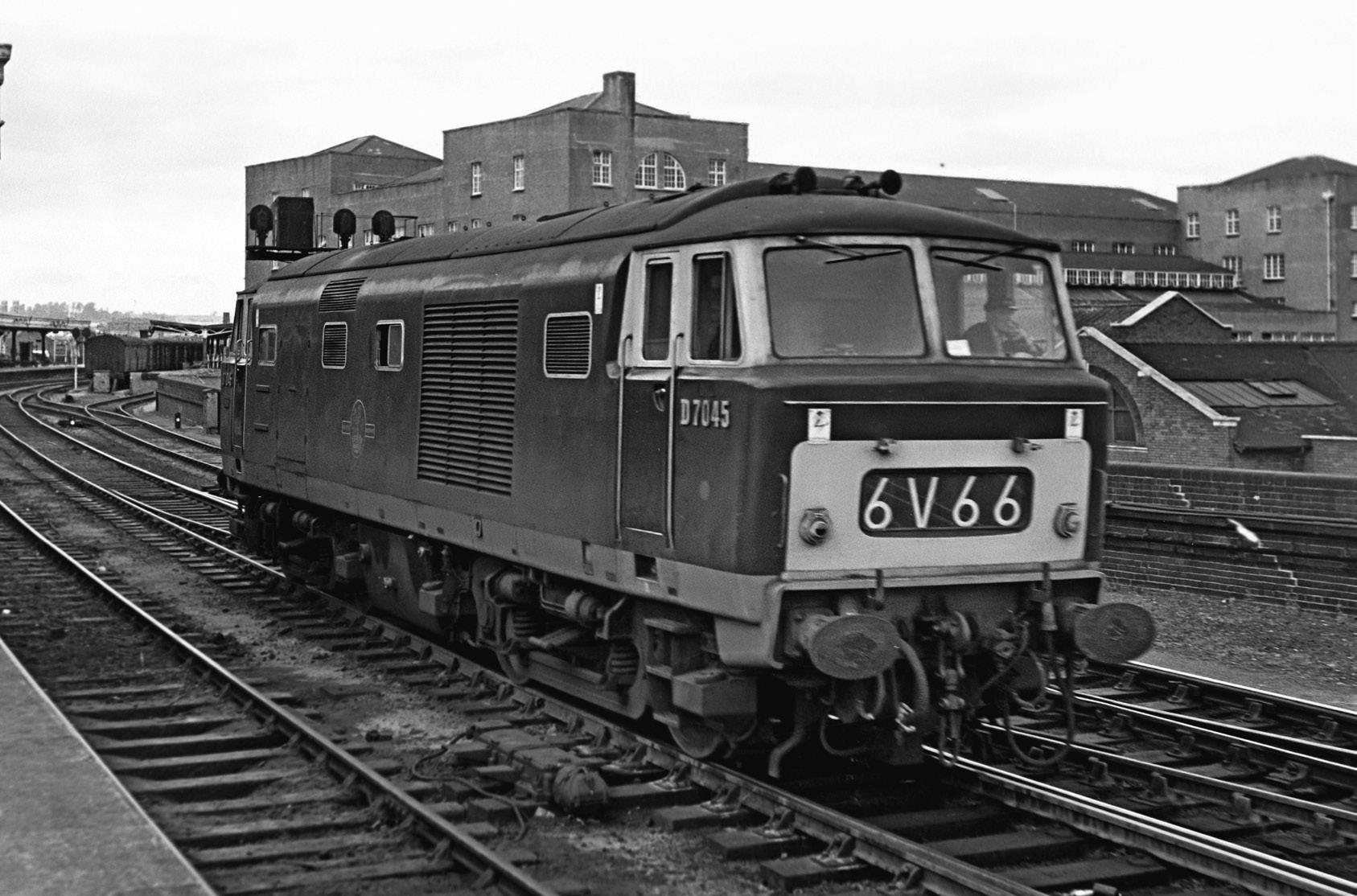
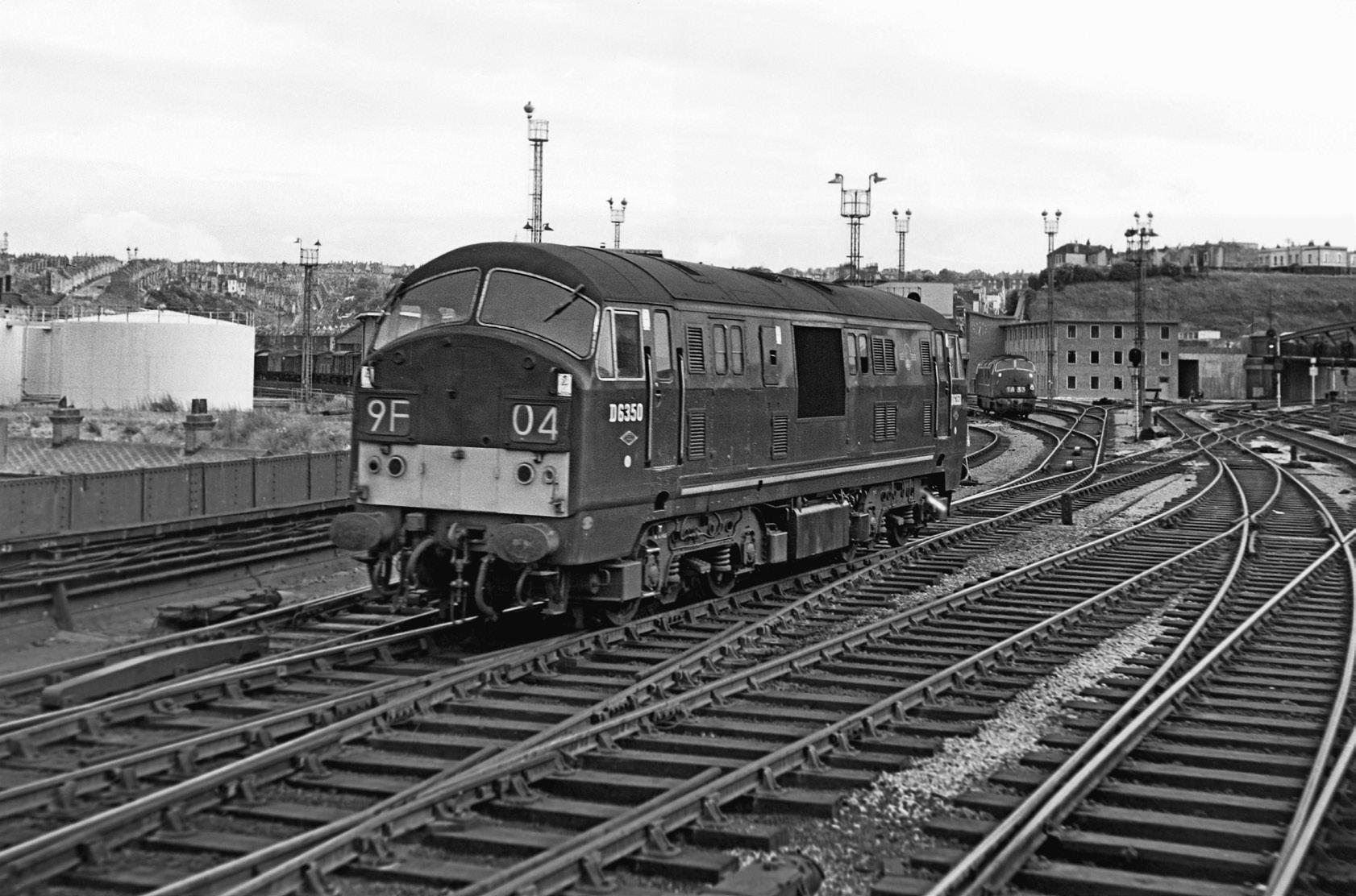
Left Top: Another of the hydraulic classes to be found in the west country was the Beyer Peacock Hymek, this example D7045 splitting its short working life of 10 years between Old Oak Common and Bristol Bath Road. It is seen here running light engine along the southern side of Temple Meads returning to depot on 26 June 1963. (Alec Swain)
Left Bottom: Perhaps the most unloved of the WR’s hydraulic classes, and certainly one of the most unreliable and in many eyes one of the ugliest, were the North British Type 2s. D6350 of this class is seen also on 26 June 1963 near Bath Road Diesel depot where a Warship can be seen on the depot. This locomotive had an even shorter lifespan than the other hydraulic classes putting in just over 6 years before withdrawal in September 1968. This premature exit was not helped by the fact that North British had gone bankrupt in 1962 necessitating utilising withdrawn locomotives for spares in order to keep the rest of the fleet running. The tall depot floodlights are very evident in this view.
(Alec Swain)
Right: We could not leave consideration of the diesel classes without including one of the ubiquitous DMUs that were prevalent on suburban and local stopping services in the Bristol area. Phase One of the Bristol Area diesel scheme commenced in October 1958 when some of the Severn Beach and Henbury line services were turned over to this form of traction. DMUs in the area were a mixture of Derby suburban sets, later Class 116, and both types of Cross Country set, later classes 119 and 120. The example seen here on 26 June 1963 passing the diesel depot is one of the suburban sets sporting its “speed whiskers” as they would become known. (Alec Swain)
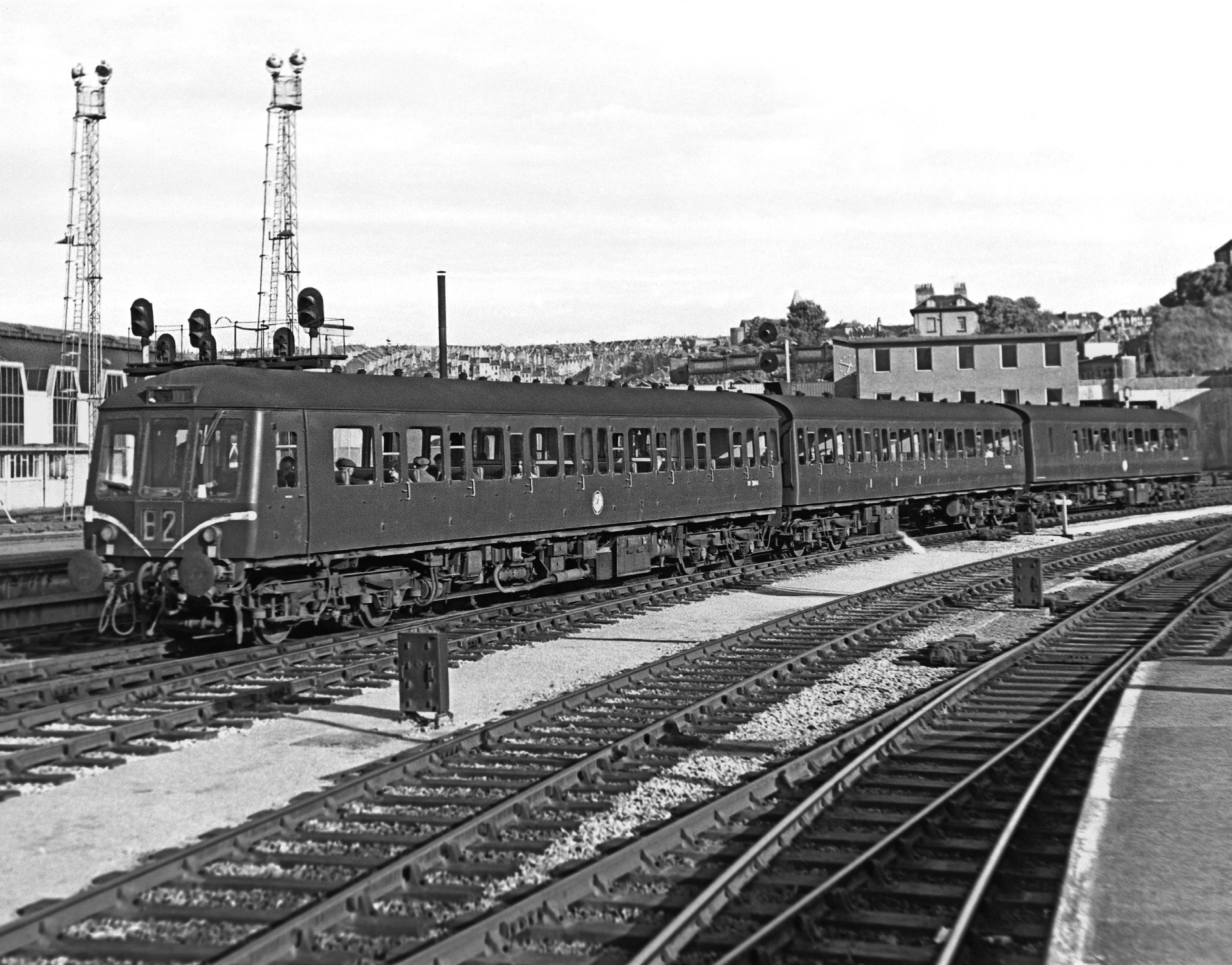
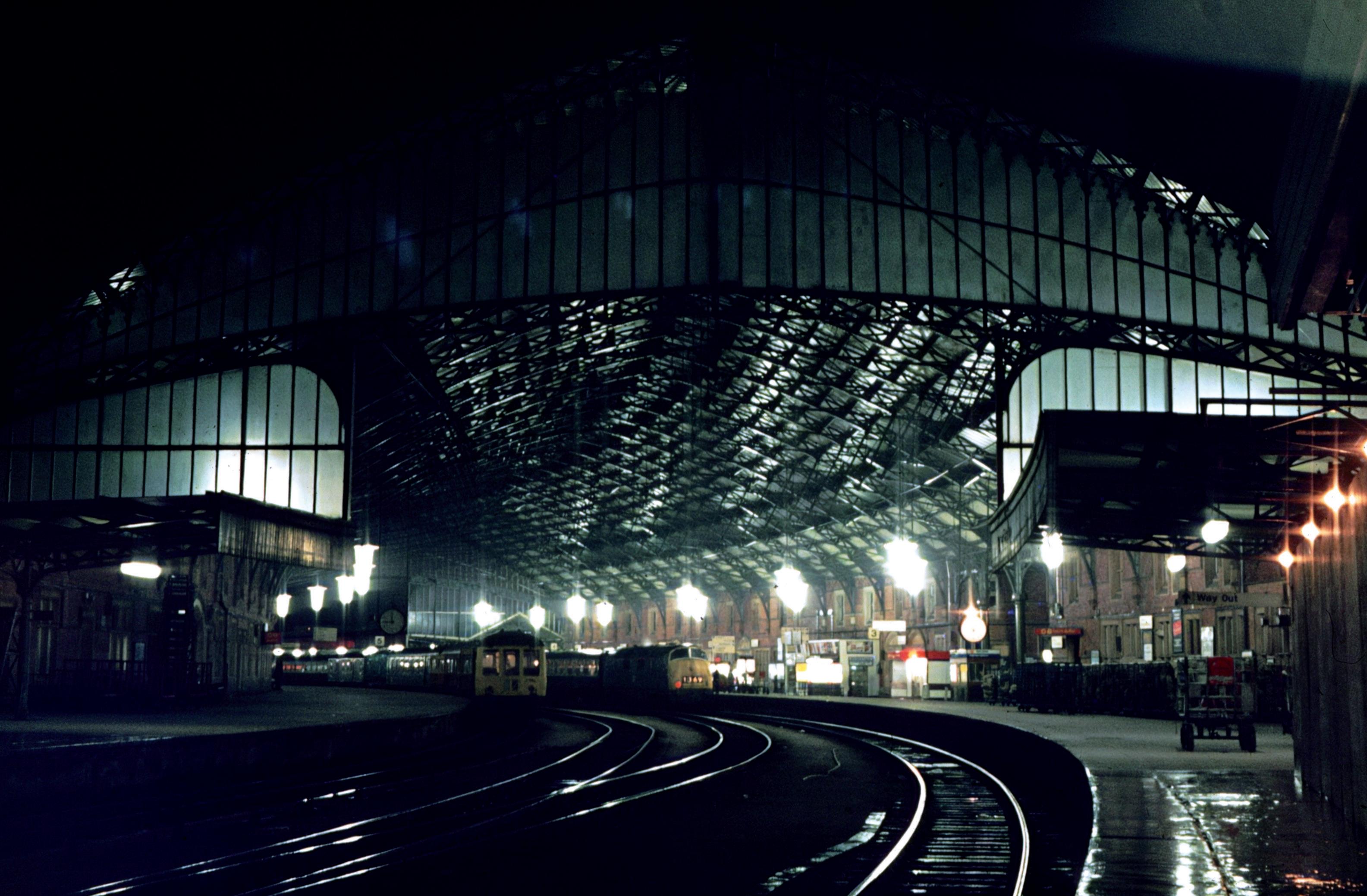
The magnificent curved overall roof of Temple Meads looked even more dramatic at night as this atmospheric shot taken one evening in the late 1960s illustrates. A Warship diesel on a passenger working has just arrived at Platform 9 whilst opposite a DMU is in evidence. (Author)
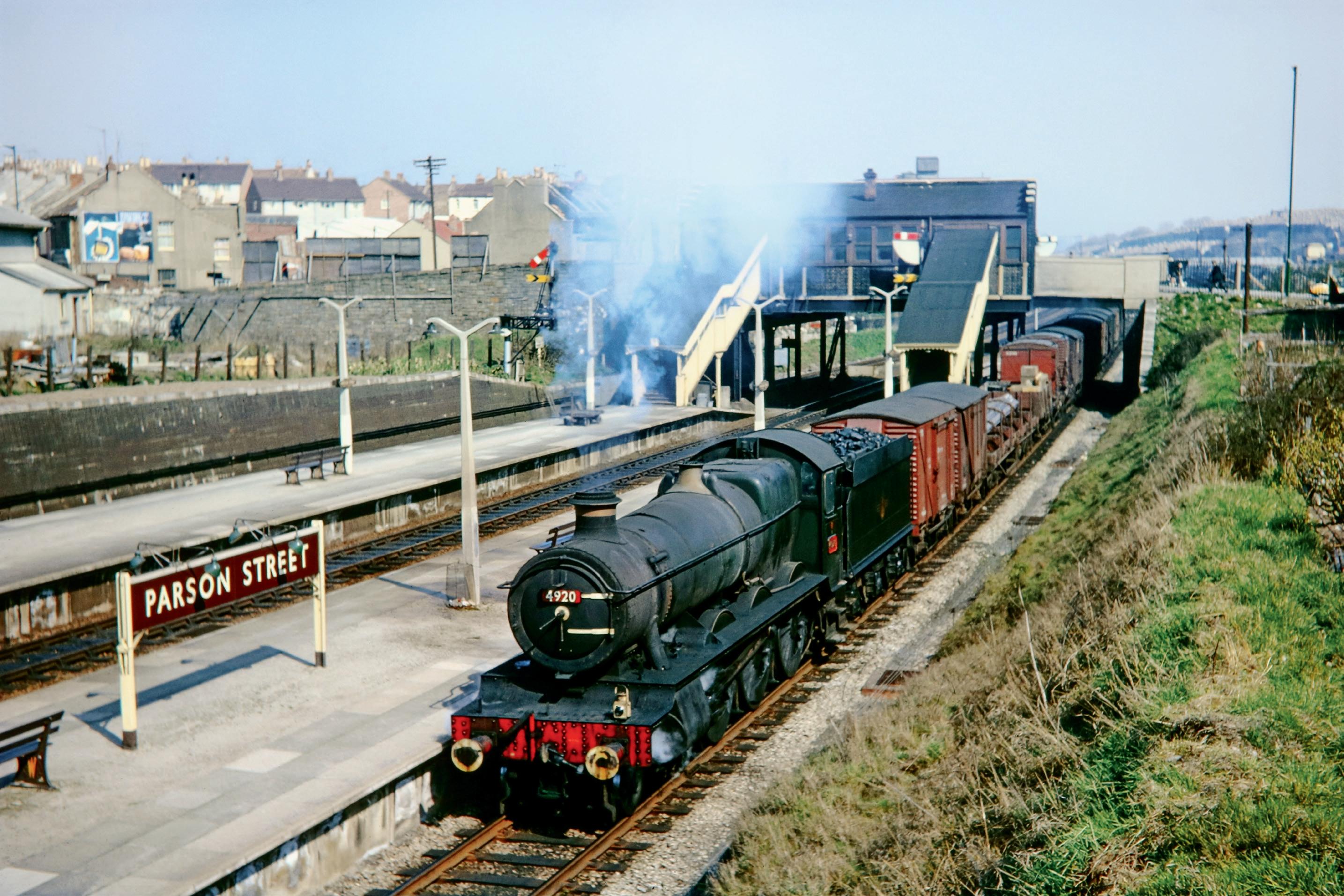
Hall Class No 4920 Dumbleton Hall heads west with a freight service through Parson Street station whose main building was at street level with access to the platforms being by means of the stairs. The main building containing the ticket office, illustrated later on in this volume and dating from the rebuilding of the station in the 1930s, continued to advertise its GW origins until demolished in 1971. The 4-6-0 was latterly allocated to St. Philips Marsh shed from where it was withdrawn at the end of 1965, along with the majority of the WR’s remaining stock of steam locomotives. (Terry Nicholls)
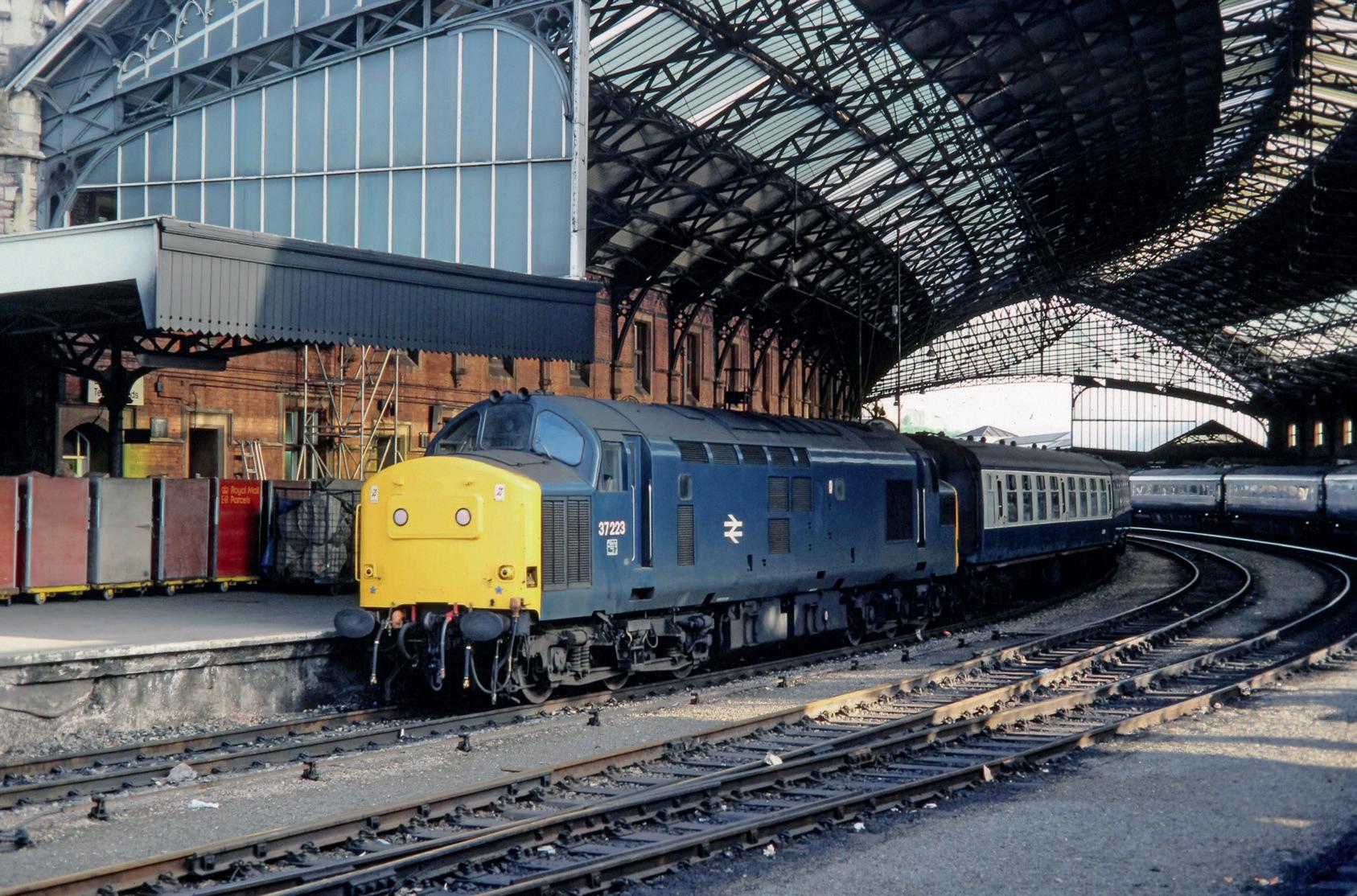
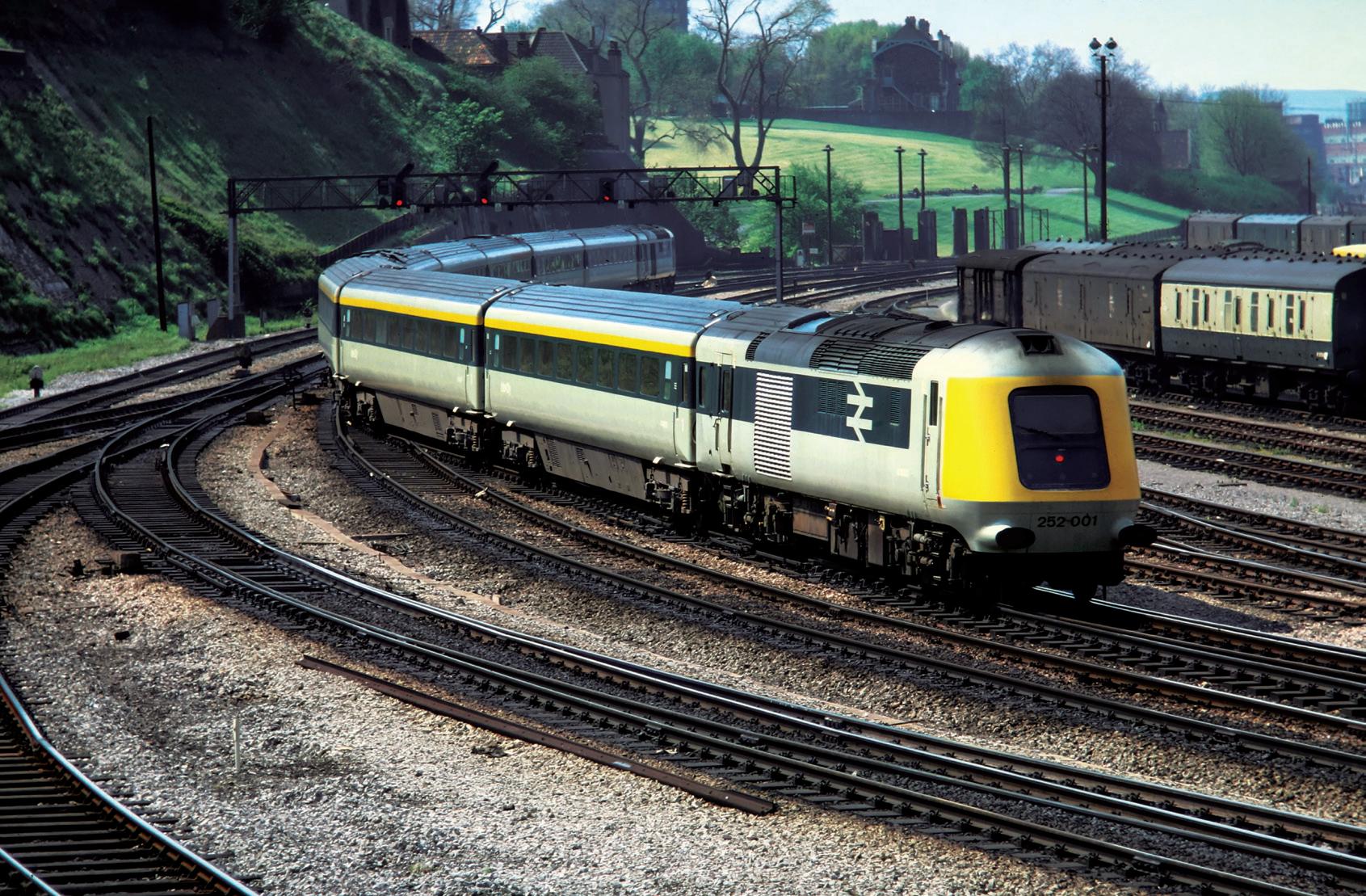
Left Top: Class 37 No 37223 waits underneath the trainshed with a Bristol to Cardiff service on 12 June 1983. At this date this English Electric Co-Co locomotive was based at Cardiff’s Canton depot and it managed a very creditable 37 years’ service before withdrawal came in January 2003 being later scrapped at Sims Metals (now part of Unimetals) in Beeston, Nottinghamshire. (Arthur Turner)
Left Bottom: Prototype HST No 252 001 consisting of eight coaches plus two power cars rounds the curve away from Temple Meads on an unrecorded date. This set was constructed at Crewe in 1972 and operated between Paddington and Weston-super-Mare from 1975 until the production units came on stream in quantity. Of interest is the fact that the prototype had buffers whereas the production sets did not. The carriage washer seen in a previous image is evident in the distance. (Terry Nicholls)
Right: Snow blankets this scene of Temple Meads taken on 10 February 1985 and captures a cross platform chat between the crews of HST power car No 43141 and Class 31 No 31460. No 43141 was one of 27 sets subsequently moved from Great Western to Abellio Scotrail for refurbishment and can these days be found working between Glasgow/Edinburgh and Aberdeen/Inverness where HSTs are still going strong. (Arthur Turner)
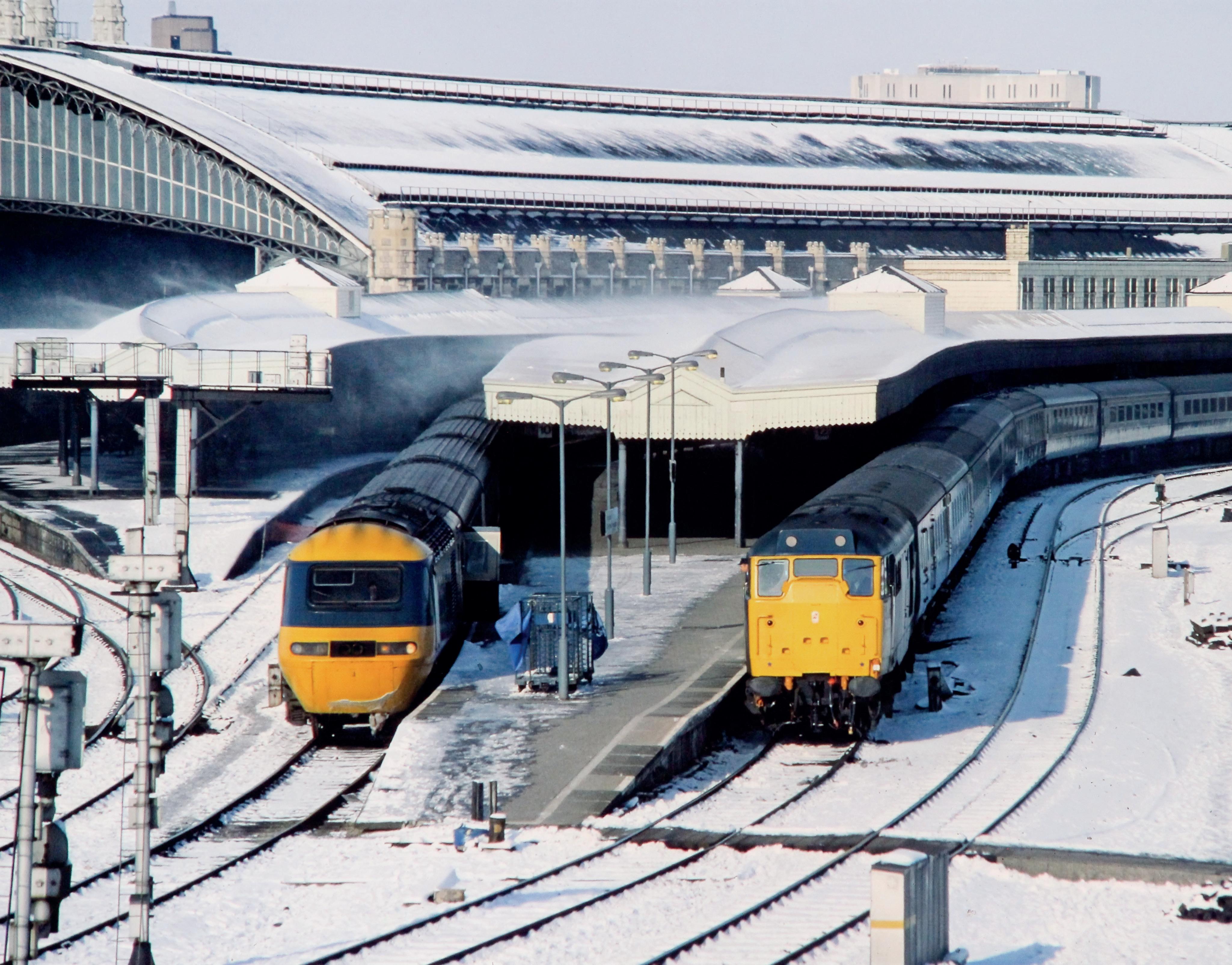
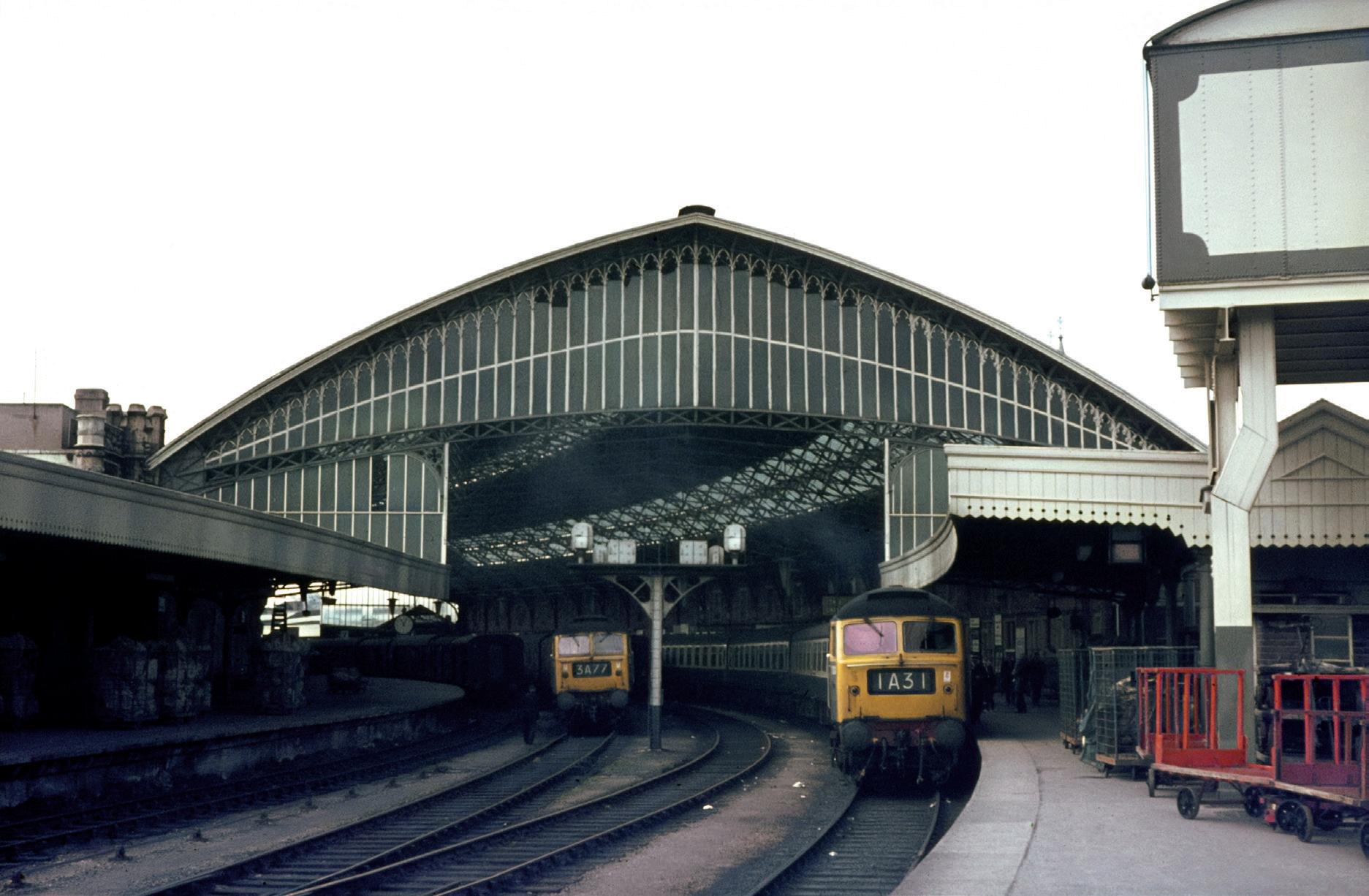
‘Bristol’ is one of a series of 12 books being released in 2025 showcasing railway works and centres to commemorate ‘Railway 200’.
This volume explores Bristol’s rich railway heritage, with images of Temple Meads, named expresses, and scenes from the steam age to now. Covering depots, freight yards, and suburban stations, it highlights Bristol’s pivotal role and looks ahead to electrification and a thriving future.

£16.50

